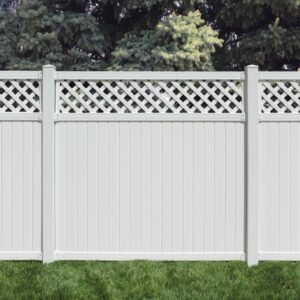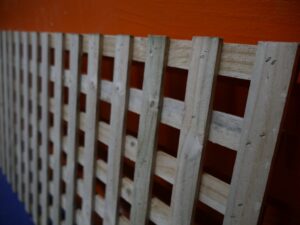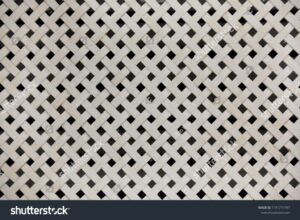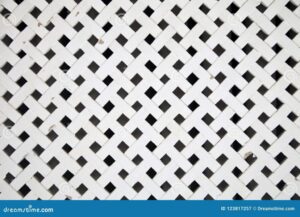-
Table of Contents
- The Benefits of Using Traditional Timber Lattice for Home Decor
- How to Install Traditional Timber Lattice for a Professional Look
- Creative Ways to Incorporate Traditional Timber Lattice into Your Home Design
- The History of Traditional Timber Lattice and Its Uses
- The Pros and Cons of Using Traditional Timber Lattice
- How to Care for and Maintain Traditional Timber Lattice
- The Different Types of Traditional Timber Lattice and Their Uses
- How to Choose the Right Traditional Timber Lattice for Your Home
The Benefits of Using Traditional Timber Lattice for Home Decor
Traditional timber lattice is a timeless and versatile material that can be used to add a touch of elegance and sophistication to any home decor. This type of lattice is made from natural wood, which is both durable and aesthetically pleasing. It can be used to create a variety of decorative elements, from wall panels to window treatments. Here are some of the benefits of using traditional timber lattice for home decor.
First, traditional timber lattice is a cost-effective way to add a touch of style to any room. It is much less expensive than other materials, such as metal or plastic, and can be used to create a variety of decorative elements. Additionally, it is easy to install and maintain, making it a great choice for those who are looking for a low-maintenance decorating solution.
Second, traditional timber lattice is a great way to add texture and dimension to any room. The natural wood grain of the lattice creates a unique look that can be used to create a variety of interesting patterns and designs. Additionally, the lattice can be stained or painted to match any existing decor.
Third, traditional timber lattice is a great way to add privacy to any room. The lattice can be used to create a barrier between two rooms or to create a more intimate atmosphere in a room. Additionally, the lattice can be used to create a decorative screen that can be used to block out unwanted views or to create a more private space.
Finally, traditional timber lattice is a great way to add a touch of nature to any room. The natural wood grain of the lattice creates a rustic look that can be used to create a cozy and inviting atmosphere. Additionally, the lattice can be used to create a natural-looking backdrop for plants or other decorative elements.
Overall, traditional timber lattice is a great way to add a touch of elegance and sophistication to any home decor. It is cost-effective, easy to install and maintain, and can be used to create a variety of interesting patterns and designs. Additionally, it is a great way to add texture, dimension, privacy, and a touch of nature to any room.
How to Install Traditional Timber Lattice for a Professional Look
Installing traditional timber lattice is a great way to add a professional look to your home. With a few simple steps, you can easily install your own lattice and enjoy the aesthetic benefits it provides.
Before you begin, make sure you have all the necessary materials. You will need a saw, drill, screws, lattice panels, and a level. You will also need to measure the area where you plan to install the lattice.
Once you have all the materials, you can begin the installation process. Start by cutting the lattice panels to the desired size. Make sure to measure twice and cut once to ensure a precise fit.
Next, use the drill to attach the lattice panels to the frame. Make sure to use screws that are long enough to penetrate the frame and hold the lattice securely in place.
Once the lattice is attached, use the level to make sure it is even. If it is not, make adjustments as necessary.
Finally, use the saw to trim any excess lattice. This will give the lattice a professional, finished look.
With these simple steps, you can easily install traditional timber lattice for a professional look. Enjoy the aesthetic benefits it provides and the satisfaction of a job well done.
Creative Ways to Incorporate Traditional Timber Lattice into Your Home Design
1. Create a Feature Wall: Incorporate traditional timber lattice into your home design by creating a feature wall. This can be done by using the lattice as a backdrop for a bed or sofa, or as a wall divider. The lattice will add texture and interest to the room, while also providing a unique and eye-catching focal point.
2. Use as a Room Divider: Traditional timber lattice can be used to create a room divider. This can be done by attaching the lattice to the ceiling and floor, or by using it as a wall divider. This will create a unique and interesting look, while also providing a sense of privacy and separation between two rooms.
3. Add a Window Treatment: Traditional timber lattice can be used to create a unique window treatment. This can be done by attaching the lattice to the window frame, or by using it as a window valance. This will add texture and interest to the room, while also providing a unique and eye-catching window treatment.
4. Create a Fence: Traditional timber lattice can be used to create a unique and interesting fence. This can be done by attaching the lattice to posts or by using it as a wall divider. This will add texture and interest to the yard, while also providing a sense of privacy and separation from the outside world.
5. Add a Porch or Patio Cover: Traditional timber lattice can be used to create a unique and interesting porch or patio cover. This can be done by attaching the lattice to the roof or by using it as a wall divider. This will add texture and interest to the outdoor space, while also providing a sense of privacy and separation from the outside world.
The History of Traditional Timber Lattice and Its Uses
Timber lattice is a type of construction material that has been used for centuries in a variety of applications. It is a type of open framework consisting of a series of interlocking wooden strips or bars, usually arranged in a criss-cross pattern. The lattice is held together by a combination of mortise and tenon joints, dowels, or nails.
The earliest known use of timber lattice dates back to ancient Egypt, where it was used to construct the walls of the Great Pyramid of Giza. In the Middle Ages, timber lattice was used to construct the roofs of churches and other religious buildings. It was also used to create decorative screens and partitions in homes and other buildings.
In the 19th century, timber lattice was used to construct the walls of factories and warehouses. It was also used to create decorative trellises and arbors in gardens and parks. In the 20th century, timber lattice was used to construct the walls of greenhouses and conservatories.
Today, timber lattice is still used in a variety of applications. It is often used to create decorative screens and partitions in homes and other buildings. It is also used to construct the walls of greenhouses and conservatories. In addition, timber lattice is often used to create trellises and arbors in gardens and parks.
Timber lattice is a versatile and durable construction material that has been used for centuries in a variety of applications. It is a type of open framework consisting of a series of interlocking wooden strips or bars, usually arranged in a criss-cross pattern. The lattice is held together by a combination of mortise and tenon joints, dowels, or nails. It is still used today in a variety of applications, including decorative screens and partitions, greenhouses and conservatories, and trellises and arbors.
The Pros and Cons of Using Traditional Timber Lattice
Traditional timber lattice is a popular choice for many homeowners looking to add a decorative touch to their outdoor space. It is a versatile material that can be used to create a variety of structures, such as trellises, arbors, and screens. While traditional timber lattice offers many benefits, there are also some drawbacks to consider before making a purchase.
Pros
One of the main advantages of traditional timber lattice is its aesthetic appeal. The natural wood grain and texture of the material adds a rustic charm to any outdoor space. It is also available in a variety of colors and finishes, allowing you to customize the look of your lattice to match your home’s exterior.
Traditional timber lattice is also a durable material that can withstand the elements. It is resistant to rot, decay, and insect damage, making it a great choice for outdoor structures. Additionally, it is easy to install and maintain, requiring only occasional cleaning and staining to keep it looking its best.
Cons
One of the drawbacks of traditional timber lattice is its cost. It is typically more expensive than other materials, such as vinyl or plastic lattice. Additionally, it is not as strong as other materials, making it more susceptible to damage from wind and other weather conditions.
Another potential downside of traditional timber lattice is its environmental impact. The harvesting of timber for lattice can have a negative impact on the environment, as it requires the cutting down of trees. Additionally, the production of the material can produce harmful emissions.
Overall, traditional timber lattice is a great choice for many homeowners looking to add a decorative touch to their outdoor space. While it is more expensive than other materials, it is also more aesthetically pleasing and durable. However, it is important to consider the environmental impact of the material before making a purchase.
How to Care for and Maintain Traditional Timber Lattice
Traditional timber lattice is a popular choice for many outdoor projects, such as fencing, trellises, and arbors. It is a beautiful and durable material that can last for many years with proper care and maintenance. Here are some tips for keeping your traditional timber lattice looking its best.
1. Cleaning: Regularly clean your traditional timber lattice to remove dirt, dust, and debris. Use a soft brush and mild detergent to gently scrub the surface. Rinse with clean water and allow to dry completely before applying any sealant or stain.
2. Sealing: Sealing your traditional timber lattice will help protect it from the elements and extend its life. Use a high-quality sealant designed for outdoor use and apply it according to the manufacturer’s instructions.
3. Staining: Staining your traditional timber lattice will give it a beautiful finish and help protect it from the elements. Use a high-quality stain designed for outdoor use and apply it according to the manufacturer’s instructions.
4. Repairs: If your traditional timber lattice becomes damaged, it is important to repair it as soon as possible. Use a high-quality wood glue to repair any broken pieces and sand down any rough edges.
5. Maintenance: Regularly inspect your traditional timber lattice for signs of wear and tear. Tighten any loose screws or bolts and replace any broken pieces.
By following these tips, you can ensure that your traditional timber lattice will remain in good condition for many years to come. With proper care and maintenance, your traditional timber lattice will remain a beautiful and durable addition to your outdoor space.
The Different Types of Traditional Timber Lattice and Their Uses
Traditional timber lattice is a type of construction material that has been used for centuries to create decorative and functional structures. It is made up of thin strips of wood that are arranged in a crisscross pattern, creating a lattice-like structure. This type of lattice is often used to create fences, trellises, and other outdoor structures. It can also be used to create decorative screens and panels for interior spaces.
There are several different types of traditional timber lattice available, each with its own unique characteristics and uses. The most common type is the square lattice, which is made up of thin strips of wood arranged in a square pattern. This type of lattice is often used to create fences and trellises, as well as decorative screens and panels. It is also commonly used to create lattice-topped tables and chairs.
The diamond lattice is another type of traditional timber lattice. This type of lattice is made up of thin strips of wood arranged in a diamond pattern. It is often used to create decorative screens and panels, as well as trellises and fences. It is also commonly used to create lattice-topped tables and chairs.
The herringbone lattice is a type of traditional timber lattice that is made up of thin strips of wood arranged in a herringbone pattern. This type of lattice is often used to create decorative screens and panels, as well as trellises and fences. It is also commonly used to create lattice-topped tables and chairs.
The chevron lattice is a type of traditional timber lattice that is made up of thin strips of wood arranged in a chevron pattern. This type of lattice is often used to create decorative screens and panels, as well as trellises and fences. It is also commonly used to create lattice-topped tables and chairs.
Traditional timber lattice is a versatile and attractive material that can be used to create a variety of structures and decorative elements. It is available in a variety of different types, each with its own unique characteristics and uses. Whether you are looking to create a fence, trellis, or decorative screen, traditional timber lattice is an excellent choice.
How to Choose the Right Traditional Timber Lattice for Your Home
When it comes to adding a touch of traditional charm to your home, timber lattice is a great choice. Not only does it look great, but it also provides a practical solution for screening off areas of your garden or providing extra privacy. With so many different types of timber lattice available, it can be difficult to know which one is right for your home. Here are some tips to help you choose the right traditional timber lattice for your home.
First, consider the size of the area you want to cover. Traditional timber lattice comes in a variety of sizes, so you’ll need to measure the area you want to cover and choose a lattice that will fit. If you’re looking for a more decorative look, you can also opt for a larger lattice and use it to create a feature wall or trellis.
Next, think about the type of timber you want to use. Traditional timber lattice is usually made from cedar, redwood, or pine, but there are other options available. Consider the look and feel you want to achieve and choose a timber that will complement your home’s style.
Finally, consider the type of finish you want. Traditional timber lattice can be stained, painted, or left natural. If you’re looking for a more rustic look, you can opt for a natural finish. If you want a more modern look, you can choose a painted finish.
By following these tips, you’ll be able to choose the right traditional timber lattice for your home. With the right lattice, you can create a beautiful feature in your garden or provide extra privacy in your outdoor space.
Please visit our informative DIY Lattice, the how to Do It Yourself section, or our sister site DIY Fencing at A1 Fencing.








